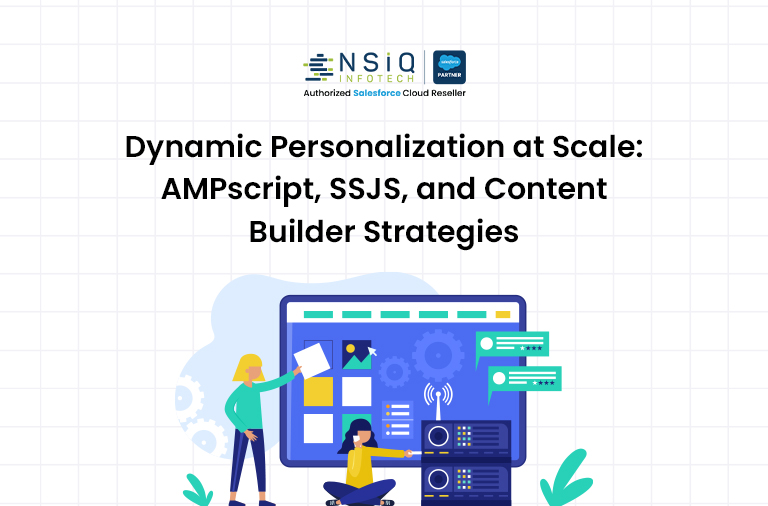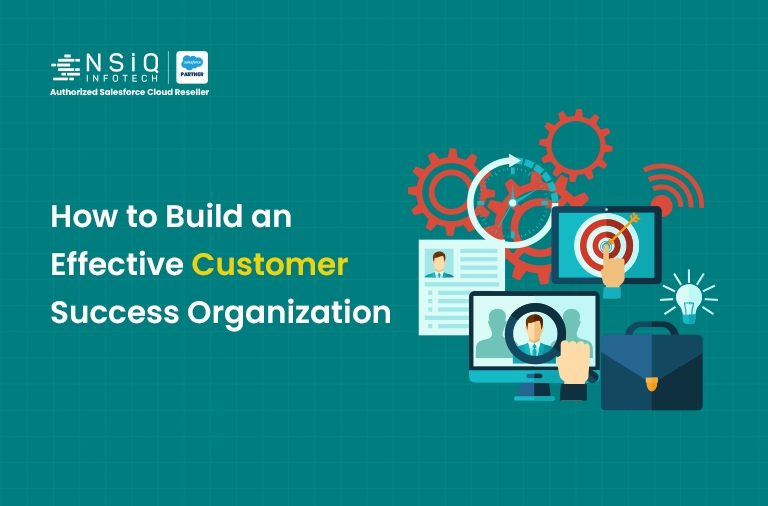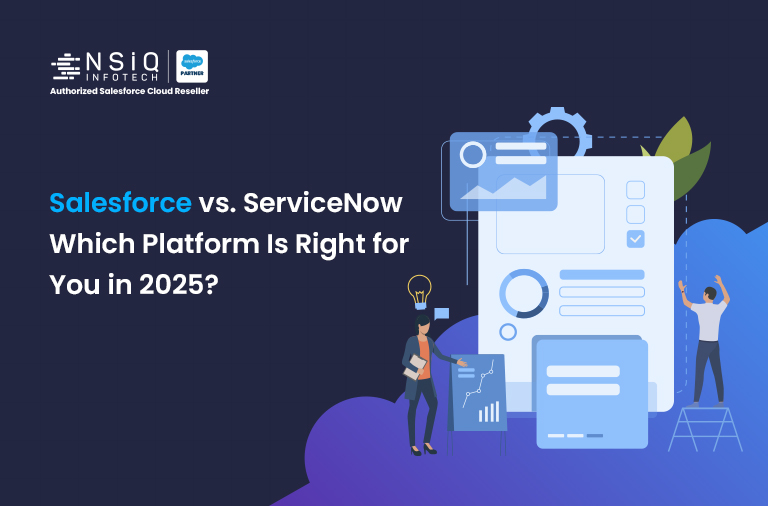Dynamic Personalization at Scale in Salesforce Marketing Cloud: AMPscript, SSJS, and Content Builder Strategies

In digital marketing, personalization has moved from being a “nice-to-have” to a must-have strategy. Customers today expect content that matches their preferences, interests, and behaviors. Salesforce Marketing Cloud (SFMC) offers powerful tools such as AMPscript, Server-Side JavaScript (SSJS), and Content Builder that allow marketers to deliver dynamic personalization at scale—whether sending 5,000 emails or 5 million.
This blog explores how AMPscript, SSJS, and Content Builder work, how they support Salesforce Marketing Cloud personalization, and best practices for using them effectively.
Why Personalization Matters in Salesforce Marketing Cloud
- Better Engagement – Personalized emails increase open rates and click-through rates.
- Customer Loyalty – Tailored messages help strengthen long-term customer relationships.
- Scalability – With tools like AMPscript and SSJS, marketers can automate personalization for millions of customers without manual effort.
AMPscript: The Core of Email Personalization
What is AMPscript?
AMPscript is Salesforce Marketing Cloud’s built-in scripting language, designed specifically for email personalization. It helps marketers create messages that adapt to each subscriber’s data.
Where is it used?
- Emails (subject lines, body content)
- CloudPages
- SMS campaigns
Key AMPscript Personalization Examples:
- Displaying subscriber names: %%=ProperCase(FirstName)=%%
- Conditional content: Showing different offers for new vs. loyal customers
- Data lookups: Fetching loyalty points, preferences, or region from a Data Extension
Best Practices for AMPscript in SFMC:
- Keep scripts simple and modular.
- Test emails in “Preview and Test” mode before sending.
- Avoid complex nesting; split into multiple dynamic blocks for maintainability.
Use AMPscript when you need quick and efficient personalization in Salesforce Marketing Cloud emails.
SSJS: Extending Personalization Beyond Emails
What is SSJS?
Server-Side JavaScript (SSJS) in the Salesforce Marketing Cloud allows marketers and developers to perform advanced operations that AMPscript cannot handle. It works across CloudPages, Automation Studio, and even inside emails.
Where is SSJS used?
- CloudPages for interactive forms and web apps
- Automation Studio for backend data processing
- Complex personalization logic in emails
SSJS Functionality Examples:
- Data operations: Insert, update, or delete records in Data Extensions
- API calls: Connect to external systems and import data into SFMC
- Loops and conditions: Run advanced personalization logic at scale
Best Practices for SSJS in SFMC:
- Use it for advanced use cases, not simple personalization.
- Include error handling to avoid silent failures.
- Combine with Automation Studio for scheduled personalization tasks.
SSJS is best when projects require complex data processing, external integrations, or real-time personalization.
Content Builder: Scaling Personalized Content
What is Content Builder?
Content Builder is Salesforce Marketing Cloud’s content management system (CMS). It allows marketers to create, organize, and reuse content across multiple channels.
Content Builder Personalization Features:
- Dynamic Content Blocks: Deliver different images, offers, or text based on subscriber attributes.
- Reusable Assets: Use the same personalized block across multiple campaigns.
- Testing: Run A/B tests to see which personalization strategy performs best.
Practical Examples:
- Show different hero images based on location (e.g., US vs. Europe).
- Adjust offers dynamically based on customer loyalty tier.
- Automate language variations for global campaigns.
Content Builder ensures personalization strategies are organized, scalable, and easy to maintain.
How These Tools Work Together:
The real power of Salesforce Marketing Cloud personalization comes when AMPscript, SSJS, and Content Builder are used together:
- AMPscript handles quick personalization in emails (e.g., names, loyalty balances).
- SSJS powers backend logic, external API calls, and advanced personalization.
- Content Builder manages reusable and dynamic blocks for large-scale campaigns.
Example Workflow:
- An email greets the subscriber by name using AMPscript.
- Content Builder dynamically swaps promotional banners based on customer segment.
- SSJS pulls real-time loyalty points from a Data Extension and updates the message.
Best Practices for Dynamic Personalization at Scale:
- Design a Strong Data Model – Personalization is only as good as the data you use.
- Keep Code Efficient – Avoid long, nested scripts that slow down rendering.
- Test Before Scaling – Use SFMC’s test features to preview personalization.
- Automate Updates – Use Automation Studio and Journeys to refresh data automatically.
- Respect Privacy – Ensure personalization follows compliance rules and customer consent.
Frequently Asked Questions (FAQ)
Q1. What is personalization in Salesforce Marketing Cloud?
Personalization in SFMC means tailoring emails, SMS, or web experiences
based on subscriber data such as name, location, preferences, or behavior. It helps improve engagement and conversion rates.
Q2. When should I use AMPscript vs SSJS?
- Use AMPscript for quick and simple personalization inside emails, like greetings or conditional content.
- Use SSJS when you need complex logic, external API calls, or large-scale data processing.
Q3. Can I use AMPscript and SSJS together in the same email?
Yes. Many advanced campaigns combine AMPscript for inline personalization and SSJS for backend logic. However, keep the code efficient to avoid rendering delays.
Q4. How does Content Builder support personalization at scale?
Content Builder provides dynamic content blocks that change automatically based on subscriber attributes. This allows marketers to manage one campaign for multiple audiences without creating separate versions.
Q5. Is personalization safe from a data privacy perspective?
Yes, as long as you use data ethically and comply with privacy regulations like GDPR and CAN-SPAM. Always ensure that customer data is collected with consent and used transparently.
Conclusion:
Personalization is what sets Salesforce Marketing Cloud apart as a leading customer engagement platform.
- AMPscript personalization makes emails smarter and more relevant.
- SSJS in the Salesforce Marketing Cloud enables complex data processing and external integrations.
- Content Builder personalization ensures campaigns are scalable, reusable, and easy to manage.
When combined, these tools allow businesses to deliver dynamic personalization at scale—going beyond just adding a first name to an email, and instead creating meaningful, data-driven customer experiences. With the right Salesforce Marketing Cloud services, businesses can maximize these tools to achieve better personalization
related blog




